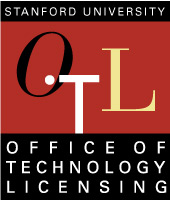On-line Disclosure Form
Is available via the Researcher Portal at
https://otldisclosure.stanford.edu.
Disclosure FAQs
Why does OTL need my work and home addresses?
We need your work address to contact you and your home address to mail royalty checks to you. Please keep us updated if either address changes.
Why is the contract/grant information important to OTL?
Under federal law, the University is required to report to the Government inventions created under sponsored research. If the University decides not to take title to such an invention (that is, decides not to keep it), then the Government has rights to it. If the Government doesn't wish to pursue it, the invention may be assigned back to the inventors. Non-Government sponsors may also have intellectual property clauses and obligations attached to such sponsorship with which OTL must comply.
How detailed should the description of the invention be?
As detailed as possible. All information provided to OTL will be kept confidential. Without adequate information, OTL cannot perform a complete evaluation of the invention's licensing potential, nor can we obtain an accurate legal opinion as to whether it is patentable. The first meeting of the Associate and the inventor(s) is a time when the invention may be discussed in greater detail. If you want to know factors considered when evaluating an invention, see Invention Evaluation Worksheet. If you want to see the questions that will be asked on the invention disclosure, see http://otl.stanford.edu/documents/disclosurequestions.pdf. You will only be allowed to submit invention disclosures online at https://otldisclosure.stanford.edu/. Please do not submit them as a document.
Why are the dates of conception and disclosure important?
This information helps provide documentation of your invention and diligent reduction to practice Keeping dated lab notebooks that are witnessed by others, and other records of your research is thus important for patenting. The dates of disclosure (this includes orally at a public meeting, in writing, or offering it for sale) are also important because they can determine what patent rights, if any, are available.
If I publish a paper or make an oral disclosure before OTL files a patent application, have we lost patent rights?
U.S. rights, no. Foreign rights, yes. In the U.S. we have one year from the date of first publication (or public disclosure) in which to file for a patent. But OTL does not file many foreign patents, since there is often a larger potential market in the U.S.
What is considered a public disclosure of an invention?
Anything that is readily available to the public (a journal paper, a conference presentation, a publication on the World Wide Web, even a dissertation indexed at the library) that describes the basic ideas in enough detail that someone else would be able to make and use the invention; i.e., those ideas that are new. Showing or telling these ideas may also constitute disclosure, as does selling or offering for sale a prototype of the invention.
Should I refrain from publishing a paper or making an oral disclosure of an invention before OTL has filed for a patent?
No. We encourage Stanford inventors to file an online invention disclosure to OTL, or at least ask OTL staff, several weeks before they publicly disclose a new invention. The earlier you start talking to OTL, the more time and better options will be available to plan a good strategy for your invention.
